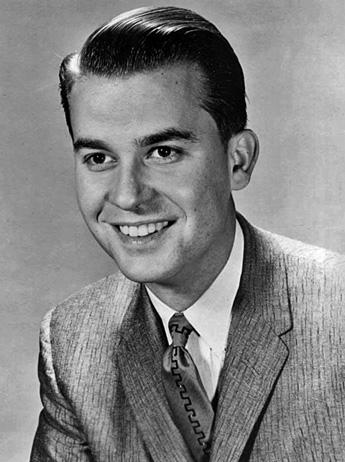Dick Clark, Rock ‘n’ Roll Salesman Who Changed America
By • May 3, 2012 0 958

One of the more characteristic items found in the many obituaries offered up for Dick Clark, who died April 18 at age 82 was that his fellow high school seniors voted him “most likely to sell the Brooklyn Bridge,” according to the Washington Post.
That was a fair assessment, because during his life Dick Clark sold many things and played many roles and had many careers and owned many businesses and shows. The most important thing he sold—the thing with the most lasting value—was rock ‘n’ roll.
That was in his role as host of “American Bandstand,” a daily popular teenaged dance shoe emanating from Philadelphia with Clark hosting, and packs of more or less local kids dancing to the emerging pop music force that was rock and roll, a force that frightened parents and was embraced by their boomer baby kids in the 1950s.
Clark, by his demeanor, his looks—forever young—and style, actually spread the impact of rock ‘n’ roll music all over the country, including the hinterlands of small town America, at least that part which had television reception. Unlike Elvis—or Marlon Brando as a biker, for that matter—Clark was nonthreatening, and the kids on the show didn’t cut it as sullen rebels, but were clean cut, often wore ties, and the girls were pretty without being flamboyantly so.
Clark, in his 30-year tenure, proved to be as influential in spreading rock ‘n’ roll as the dreaded Elvis—the show featured kids grading the latest singles, as in “I gave it a nine cause you can dance to it,” then doing the latest dances like the Twist, the Watusi, the Chicken or the Hand Jive.”
I can vouch for this: in the 1950s, I lived in small town America where in the summers we would drag home after football practice and watch American Bandstand and hear everyone from Pat Boone and Fats Domino to the Everly Brothers or Buddy Holly (“That’ll Be the Day”) and I swear every guy on the team had a crush on Justine Correlli, the pretty blonde girl who became something of a star on the show.
Clark could sell the music even though he looked nothing like a rock-n-roller, although he was, as many dubbed him, “America’s oldest teenager.” He gained recognition, exposure and acceptance for the genre at a time when it was just beginning to surge into the mainstream of pop music. Clark pushed it along and expanded its popularity, the greatest promoter rock ‘n’ roll ever had.
He wasn’t a rock star, but he knew rock stars. He knew business, and he knew American pop culture better than anyone. He headed “American Bandstand” for 35 years from 1952 to 1987. Performers on the show included Simon and Garfunkel, Ike and Tina Turner, the great Motown acts, (before Soul Train), and even the eclectic David Byrne and the Talking Heads. Clark did not, as far as we know, dance on the show, but he didn’t need to.
At heart, he was a promoter, a salesman, pursuing the great American business model. “American Bandstand” was the thing he turned into an institution, a legend and something of lasting import. But there’s more — America is full of second and third acts — Clark, after all the Grammy Award Shows, the Emmy Shows, the theater and businesses and television appearances, became a legend all over again. Since 1972, Dick Clark Productions produced “New Year’s Rockin’ Eve” on ABC, with Clark himself presiding over the lowering of the ball in Times Square every year until a stroke in 2004 sidelined him.
Clark did not idealize or even exaggerate his impact, especially “American Bandstand.” “I played the music, the kids danced and America watched,” he said.
All of that happened. And America has never quite been the same since.

